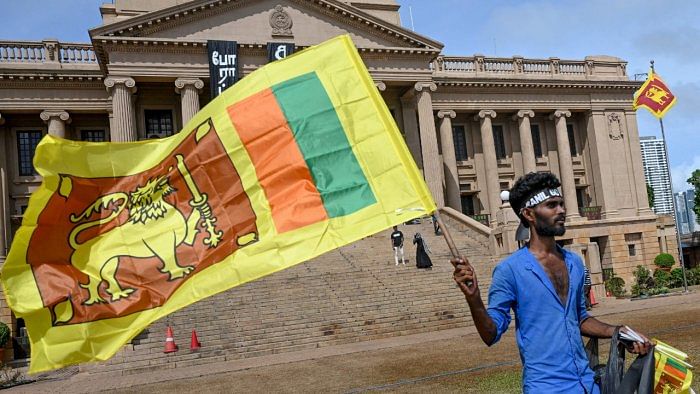
After 123 days of unprecedented anti-government protests which saw the ouster of Sri Lankan President Gotabaya Rajapaksa, the agitation over the country's worst economic crisis formally ended on Tuesday, even as the demonstrators said that their campaign for a "system change" would continue.
The protesters left the main anti-government protest camp at Galle Face promenade where they had been parked since April 9 branding it as the ‘Gota go home village’ (Rajapaksa go home).
“We have collectively decided to quit the Galle Face site today. It does not mean that our struggle has ended," Manoj Nanayakkara, a spokesman for the group, said.
“We press for ending the state of emergency, a fresh parliamentary election and an end to the presidential system," Koswatte Mahanama, a young monk said.
“Our campaign for a system change would continue, although we ended our campaign here at this site," Vidarshana Kannangara, another activist said.
The protestors came under pressure to quit the site after former prime minister Ranil Wickremesinghe was elected by Parliament to complete Rajapaksa's five-year term until 2024. After his election, Wickremesinghe authorised the military and police to forcibly dismantle the protest camps and arrest those they identified to have trespassed the presidential palace and other state buildings.
On July 22, the security forces removed the protesters from the presidential secretariat and cleared the gate they had occupied since April 9. This came under international criticism. Since then a spate of arrests of activists have raised concern with the main Opposition and rights groups labeling arrests as state repression.
The government defended the arrests, saying all those who had been arrested were either those who had defied court orders or those who had forcibly entered state buildings.
The police last week notified the protesters to leave the Galle Face site by August 5, but they defied the order and filed writ applications in the Appeal Court, claiming their right to protest.
However, when the protesters quit the Galle Face site it was announced that they had withdrawn the writ applications.
The street protests had already culminated last month when Gotabaya Rajapaksa fled to the Maldives and then to Singapore and resigned on July 14 after demonstrators stormed his official home and occupied several key government buildings. His brother Mahinda Rajapaksa resigned as prime minister in May and four other family members had quit as ministers before him.
Protesters accused the Rajapaksa family of plunging the country into the crisis through mismanagement and corruption.
On April 9, small agitations in the evenings at major towns were converted into one mass movement demanding the resignation of President Rajapaksa for his mishandling of the island’s worst economic crisis since 1948.
People of all walks of life affected by 10-hour power outages, shortages of essentials such as cooking gas and fuel joined the protest movement holding the government responsible.